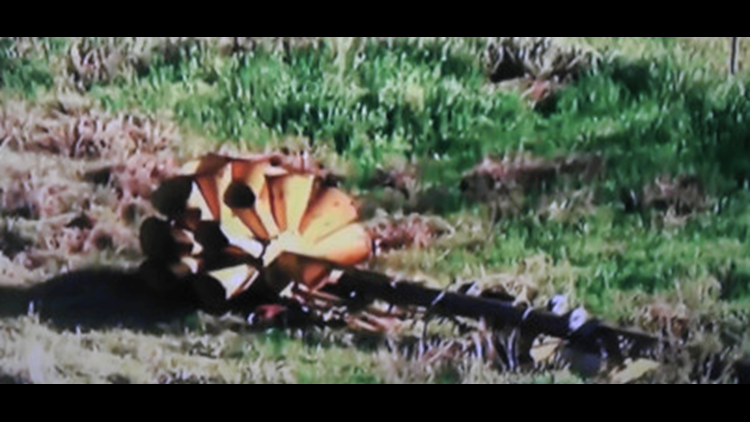I realize this blog post will be somewhat controversial but I’m consistently convinced that relying on tornado sirens kills people and we must look towards new technology to warn us of impending danger.
A quick Google search of “Tornado Sirens Didn’t Work” reveals dozens of news stories from this year in Texas, Iowa, Oklahoma, & Indiana of tornado sirens that failed when tornadoes were moving into heavily populated areas. When the sirens fail, the public tends to look for the controlling agency: law enforcement, city management, or emergency managers to place the blame. The people aren’t the problem. The sirens are.
Tornado warnings are relatively new in the timeline of America. The first was issued in 1948 at Tinker Air Force Base by Ernest Fawbush & Robert Miller, two meteorologists working at the air base who noticed a back to back weather pattern which favored tornadoes. They issued a tornado forecast, the base prepared and thousands of dollars worth of equipment and aircraft were spared when another tornado hit. It was unusual because the Weather Bureau had a policy against issuing tornado warnings.
With the advent of Doppler Radar in the 70s and 80s tornado forecasting became even more sophisticated. Instead of seeing the big overall pattern, meteorologists could now see the small-scale characteristics of rotating winds which allowed for advanced tornado warnings and lead time to the general public of 10-15 minutes before a tornado struck. This undoubtedly saved countless lives over the years.
The problem has always been warning dissemination. How do meteorologists get the warning information to the public in a fast efficient way? In the 1940s, a network of civil defense sirens were installed to warn citizens of an air raid and later the threat of a nuclear attack. Since they were already in place, most municipalities started sounding them for tornado warnings to get the attention of people outside and bring them inside to safety. It was very effective in the 1940s and 1950s to warn the public of weather danger.
So why are we depending on 1940s technology to warn people of tornadoes in 2012?
I could cite example after example of tornado siren failure. But instead I’ll just mention the most recent failure: Woodward, Oklahoma. No less than 3 supercells moved over the city in one day. Early in the day, lightning struck the tower that activated the sirens. Most of the 20 sirens in the city didn’t work when an EF3 Twister roared into town after midnight killing 5 people, 3 of them children. It’s impossible to know what role the tornado sirens played in the fatalities, but it’s safe to say if you were relying on them you wouldn’t have known of the tornado danger. The first response is “get better more advanced sirens” but I think we should consider getting rid of them altogether.
Here are five reasons we should move away from tornado sirens:
1) You Can’t Hear Them. Tornado sirens cannot be heard in most new homes unless you’re right underneath them. They were never intended to warn people inside. They were designed to get people outside… and move them inside.
2) They’re Unreliable. Even automated sirens have an element of human action. When tornadoes cut the phone lines in Fort Smith in 1996 the tornado sirens didn’t work. Outside of normal hours the responsibility shifts to other people. In the confusion of rapidly changing weather there is often a breakdown.
3) Weather Radios. The National Weather Service broadcasts non-stop weather information and warnings which sound with an audible tone when warnings are issued. Yes, they can fail too. A fire at Fort Chaffee last year cut the weather radio transmitter line. and they didn’t work. The best way to get warnings isn’t to rely on one source but multiple sources.
4) False Sense Of Security. There seems to be a thought within everyone that it’s not “bad” unless the tornado sirens go off. We have to learn the cues individually that tell us the weather is bad. For example, if flames are engulfing your home but your smoke detector doesn’t go off… do you go back to bed? No! You take action. Just because a siren isn’t sounding doesn’t mean a tornado isn’t immediately about to hit you. Siren’s create a dangerous false sense of security which keeps people in mobile homes until the tornado hits.
5) Social Media. How did you learn of Osama bin Laden’s death? How did you learn about Coach Petrino’s firing. My guess is… it wasn’t from a loud-speaker outside of your home. I learned both via Twitter. Many people use Facebook. I use both to communicate weather information to my viewers. With Apps on smart phone and the latest cell phone technology you can get warning information faster and take action quicker.
My problem with tornado sirens is they’re used as the sole source of tornado warning information. If you want to be informed of tornadoes you must have a network of ways to receive the information. Never rely on only one. If we choose to keep using tornado sirens, we need to do a better job pushing weather radios, Apps, or phone alert systems. Once you receive the information you can take action by taking shelter or supplementing the condition of danger by local TV or Radio.
It’s tragic that lives are lost because the warning information never got to the victims. The warning information is almost always there… we just need to take a close look at how it’s being distributed.
-Garrett
(Photo above shows damaged tornado siren in Woodward, Oklahoma via KWTV)



